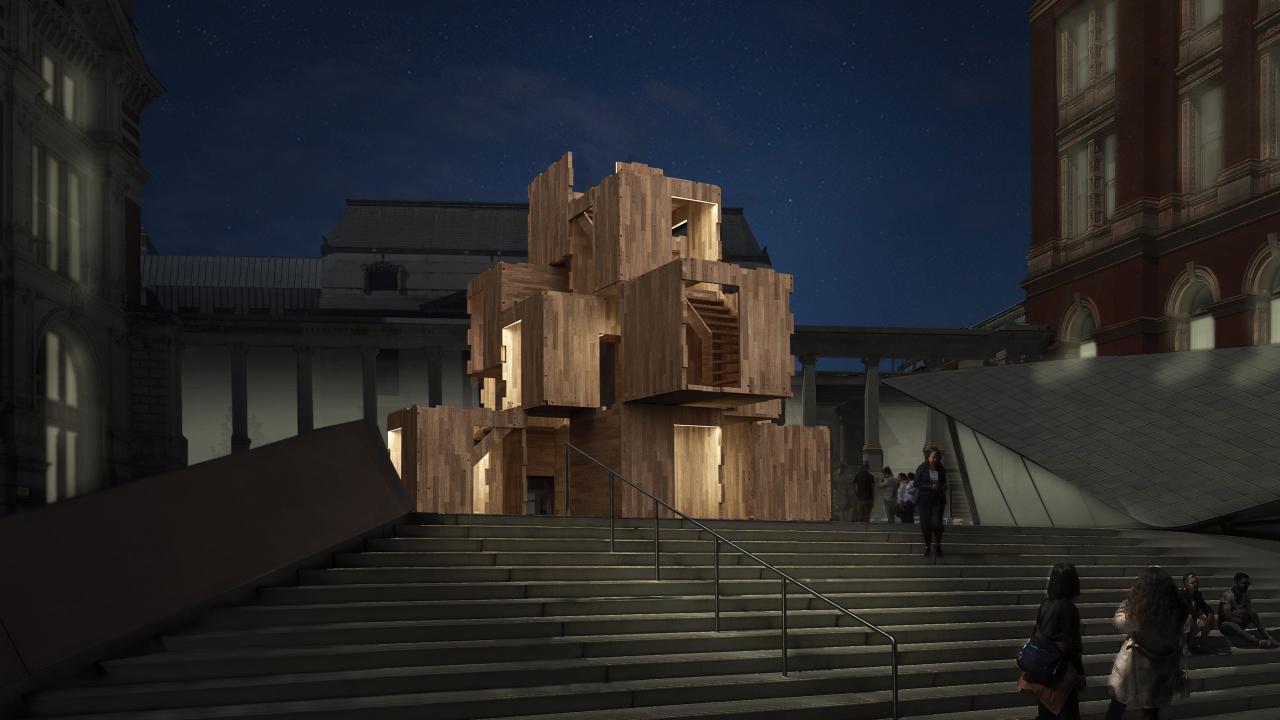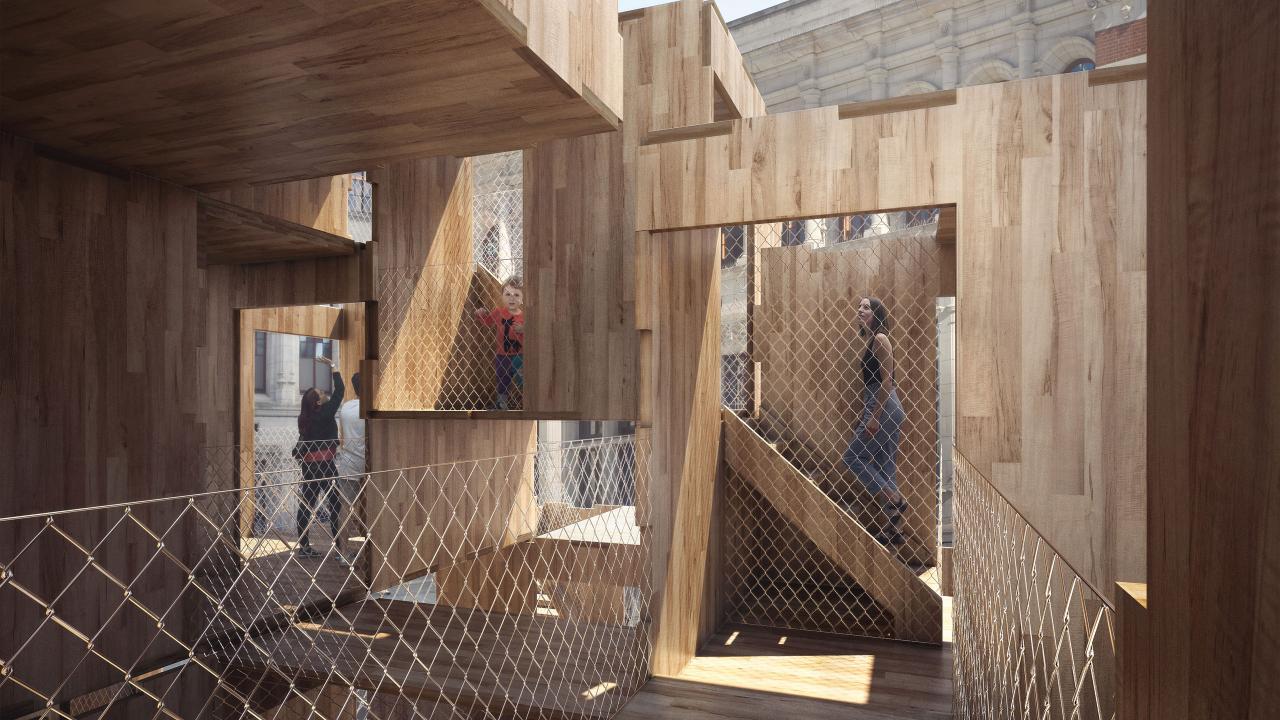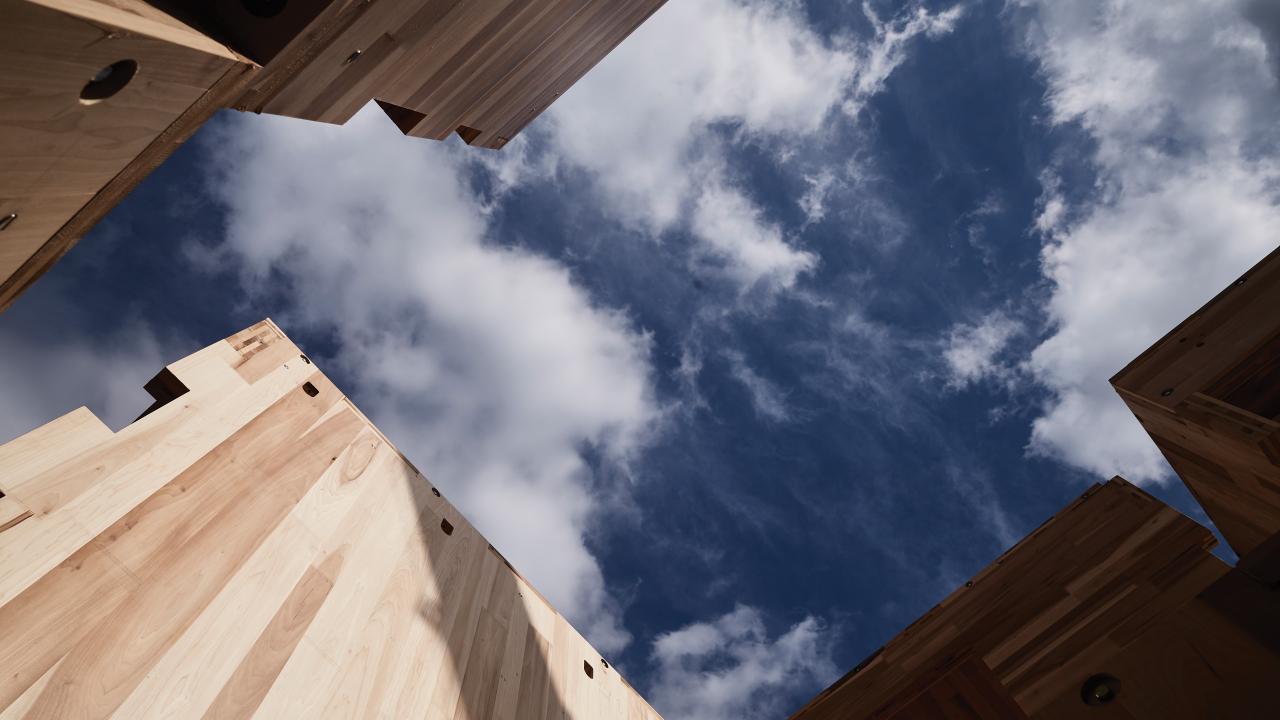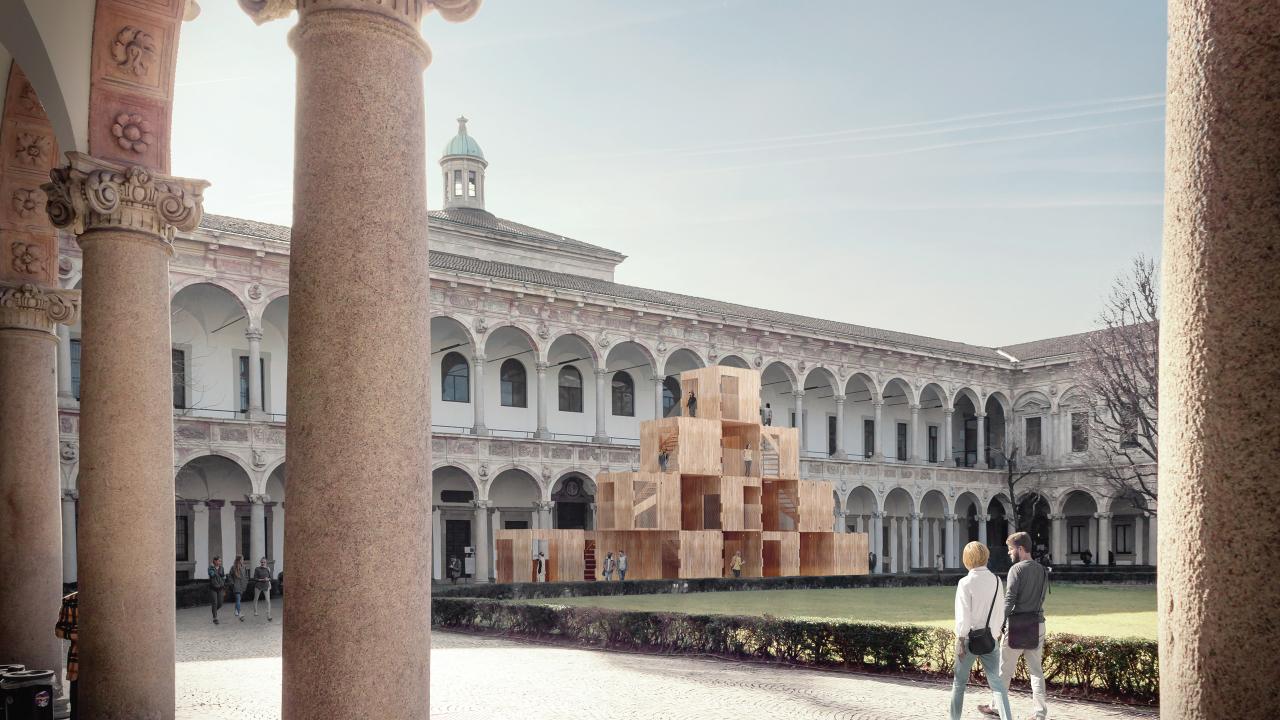VISION
“The main ambition of this project is to publicly debate how environmental challenges can be addressed through innovative, affordable construction. We are at a crisis point in terms of both housing and CO2 emissions and we believe that building in a versatile, sustainable material such as tulipwood is an important way of addressing these issues.” Andrew Waugh, co-founder of Waugh Thistleton.
AHEC have been involved in a series of structural timber projects for London Design Festival; Timber Wave, Endless Stair and The Smile, each an experiment to further our knowledge of the structural potential of timber. Following on from The Smile, AHEC wanted to delve further into the cost efficiency and market potential for tulipwood CLT and, combined with the rising movement of pre-fabricated and modular housing, linking the two together felt like a natural progression.
Waugh Thistleton Architects have been pioneering innovative uses of wood in construction for decades. MultiPly seeks to explore a new, more sustainable way of building, bringing together a readily available carbon-negative material – American tulipwood – with modular design.
Andrew Waugh, together with his partner Anthony Thistleton, first started designing in CLT in 2003 and since then have gone on to complete 20 CLT projects. The level of precision that was achieved using CLT, as well as less construction time, reduced building site noise and the huge environmental benefits, became very exciting to them. Up until now, they have only build with softwood but following the opening of the Maggie’s Centre in Oldham in 2017 – the first tulipwood CLT building in the world – they were keen to explore the potential of hardwoods in construction.
Structurally tulipwood has a phenomenal strength to weight ratio compared to other timbers meaning you can do a lot more with a lot less. Although not intended to compete with the softwood CLT industry, there’s no reason why engineered hardwood could not also be a significant industry accounting for the increasing global pressure to build sustainably.




